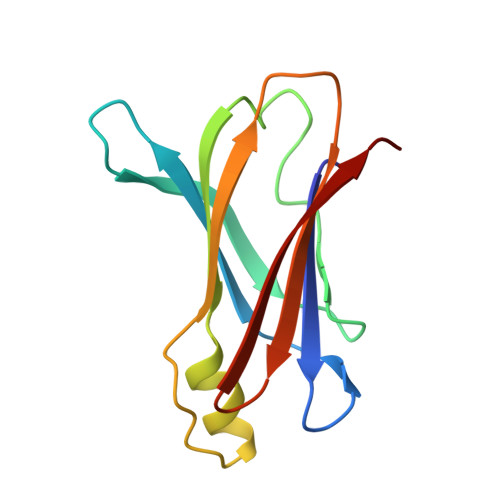Copper mediated amyloid-beta binding to Transthyretin.
Ciccone, L., Fruchart-Gaillard, C., Mourier, G., Savko, M., Nencetti, S., Orlandini, E., Servent, D., Stura, E.A., Shepard, W.(2018) Sci Rep 8: 13744-13744
- PubMed: 30213975
- DOI: https://doi.org/10.1038/s41598-018-31808-5
- Primary Citation of Related Structures:
5N5Q, 5N62, 5N7C - PubMed Abstract:
Transthyretin (TTR), a homotetrameric protein that transports thyroxine and retinol both in plasma and in cerebrospinal (CSF) fluid provides a natural protective response against Alzheimer's disease (AD), modulates amyloid-β (Aβ) deposition by direct interaction and co-localizes with Aβ in plaques. TTR levels are lower in the CSF of AD patients. Zn 2+ , Mn 2+ and Fe 2+ transform TTR into a protease able to cleave Aβ. To explain these activities, monomer dissociation or conformational changes have been suggested. Here, we report that when TTR crystals are exposed to copper or iron salts, the tetramer undergoes a significant conformational change that alters the dimer-dimer interface and rearranges residues implicated in TTR's ability to neutralize Aβ. We also describe the conformational changes in TTR upon the binding of the various metal ions. Furthermore, using bio-layer interferometry (BLI) with immobilized Aβ(1-28), we observe the binding of TTR only in the presence of copper. Such Cu 2+ -dependent binding suggests a recognition mechanism whereby Cu 2+ modulates both the TTR conformation, induces a complementary Aβ structure and may participate in the interaction. Cu 2+ -soaked TTR crystals show a conformation different from that induced by Fe 2+ , and intriguingly, TTR crystals grown in presence of Aβ(1-28) show different positions for the copper sites from those grown its absence.
- CEA Institut des Sciences du Vivant Frédéric Joliot, Service d'Ingènierie Moléculaire des Protéines (SIMOPRO), Université Paris-Saclay, 91191, Gif-sur-Yvette, France.
Organizational Affiliation:



















